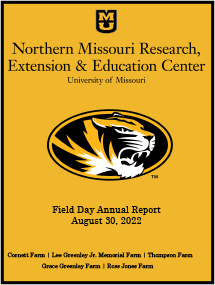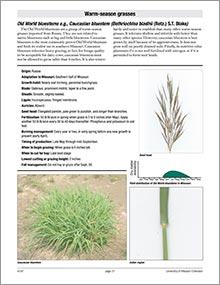

Dairy Grazing: Selecting the Right Forage, Page 18
Reviewed
Learn about Old World bluestems, such as Caucasian bluestem, their characteristics, adaptation, and management practices for optimal forage production.
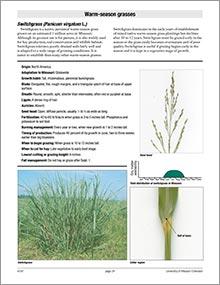
Dairy Grazing: Selecting the Right Forage, Page 21
Reviewed
Switchgrass is a hardy, warm-season grass ideal for pastures and hay. It thrives in Missouri soils and provides quality grazing when managed properly.
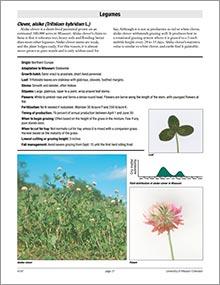
Dairy Grazing: Selecting the Right Forage, Page 24
Reviewed
Annual lespedeza is a pasture legume providing high-quality forage in midsummer, thriving on infertile soils, and not causing bloat in cattle.
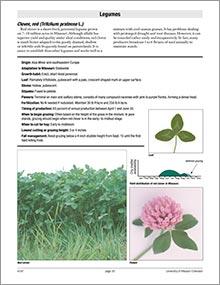
Dairy Grazing: Selecting the Right Forage, Page 27
Reviewed
Learn about Hairy Vetch, a winter annual legume used for spring pasture and silage. Discover its growth habits, benefits, and best practices for grazing.
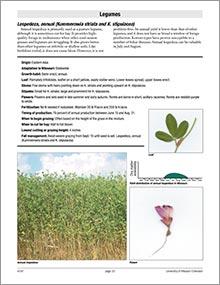
Dairy Grazing: Selecting the Right Forage, Page 30
Reviewed
White clover is a legume suitable for cool, moist climates, providing high-quality forage for livestock. It may require careful grazing management.
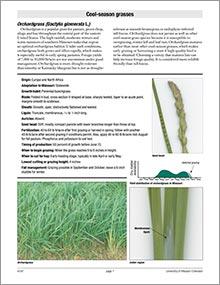
Dairy Grazing: Selecting the Right Forage, Page 04
Reviewed
Learn optimal orchardgrass management for dairy grazing, including growth habits, fertilization, and seasonal guidelines, to maximize forage yield and quality.
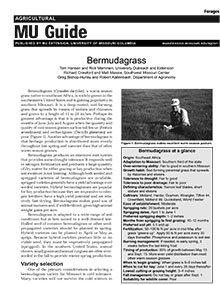
Bermudagrass
Reviewed
Bermudagrass makes excellent warm-season pasture and is gaining popularity in Missouri. Visit our website today to learn more.
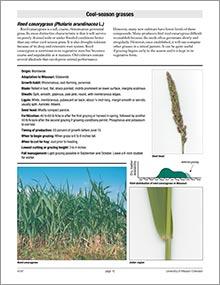
Dairy Grazing: Selecting the Right Forage, Page 07
Reviewed
Reed canarygrass is a drought-tolerant, rhizomatous grass that grows well in wet soils and provides high-quality forage early in the season.
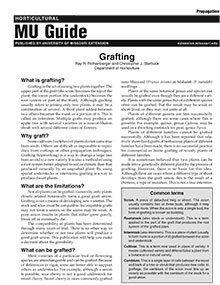
Grafting
Reviewed
Grafting is the act of joining two plants together and is a way to change a large tree from an old to a new variety. Visit our site to learn more.

Budding
Reviewed
Budding is a grafting technique where a single bud is inserted into a plant stock, often used to propagate fruit trees and ornamental plants. The best time is in fall.
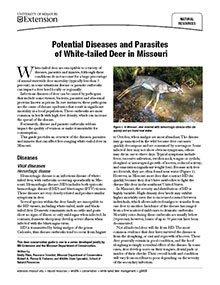
Potential Diseases and Parasites of White-tailed Deer in Missouri
Reviewed
White-tailed deer are susceptible to a variety of issues. Visit our site to learn about Potential Diseases and Parasites of White-tailed Deer in Missouri.
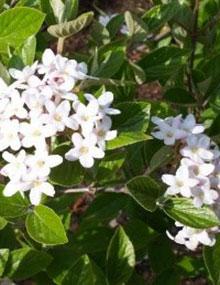
Gardening in the Shade, Page 03
Revised
Discover shade-tolerant deciduous shrubs like arrowwood viburnum, bottlebrush buckeye, and oakleaf hydrangea to enhance your shaded garden spaces.
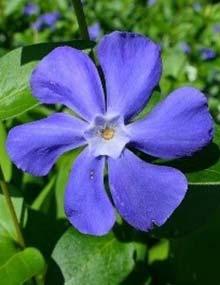
Gardening in the Shade, Page 06
Revised
Discover plants that thrive in low-light conditions and learn how to enhance your shaded garden with suitable selections and care tips.
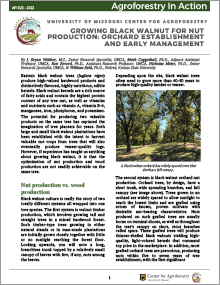
Growing Black Walnut for Nut Production: Orchard Establishment and Early Management
Revised
Eastern black walnut trees (Juglans nigra) produce high-valued hardwood products and distinctively flavored, highly nutritious, edible kernels.
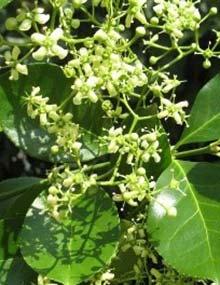
Gardening in the Shade, Page 04
Revised
Explore shade-tolerant evergreens like American holly, Canada hemlock, and Japanese holly, ideal for adding year-round interest to your shaded garden.
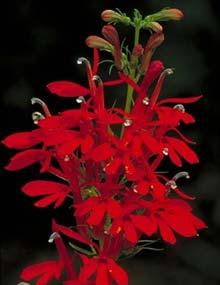
Gardening in the Shade, Page 07
Revised
Discover shade-tolerant perennials like astilbe, hosta, and bleedingheart to enhance your garden's beauty. Learn how spring-flowering bulbs thrive under trees.
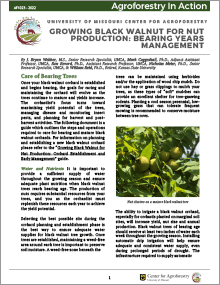
Growing Black Walnut for Nut Production: Bearing Years Management
Revised
Once your black walnut orchard is established and begins bearing, the goals for caring and maintaining the orchard will evolve as the trees continue to mature and yields increase. This guide outlines the steps and operations required to care for bearing and mature black walnut orchards.
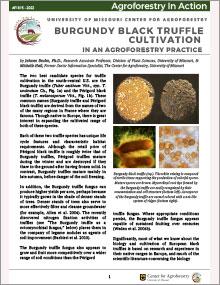
Burgundy Black Truffle Cultivation in an Agroforestry Practice
Revised
Editor's note
The following abstract describes a publication that is intended for distribution as a downloadable PDF.
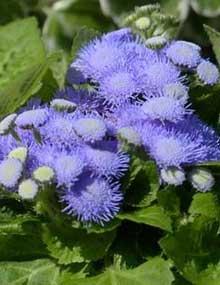
Gardening in the Shade, Page 02
Revised
Learn about these shade-tolerant annual flowers: Ageratum, Flossflower; Begonia, tuberous; Begonia, wax leaf; Browallia; Coleus; Flowering tobacco; Foxglove; Impatiens; Lobelia; Pansy; and Wishbone flower.
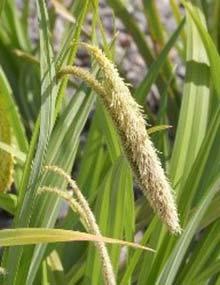
Gardening in the Shade, Page 05
Revised
Learn about these shade-tolerant grasses: Bottlebrush grass; Hakonegrass; Maiden grass, Silver grass; Sedge; Soft rush; Tufted hairgrass; and Woodrush.
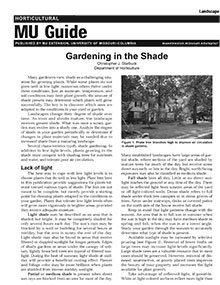
Gardening in the Shade
Revised
Many gardeners view shade as a challenging situation for growing plants. While some plants do not grow well in low light, numerous others thrive under these conditions. The key is to discover which ones are adapted to the conditions in your yard or garden.
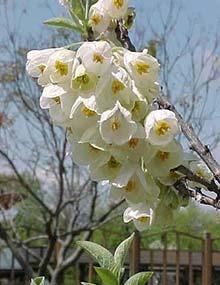
Gardening in the Shade, Page 08
Revised
Discover small trees ideal for shaded urban yards, including dogwoods, serviceberry, and hornbeam, with details on size, soil needs, and fall color.
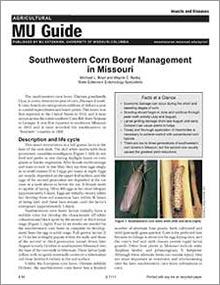
Southwestern Corn Borer Management in Missouri
Revised
This guide outlines the life cycle, damage patterns, and management strategies for the southwestern corn borer in Missouri.
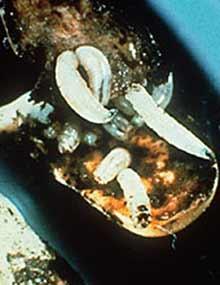
Seedcorn Maggot
Reviewed
Learn how to identify and prevent seedcorn maggot infestations in crops like corn and soybeans, which can damage seeds and reduce yields.
